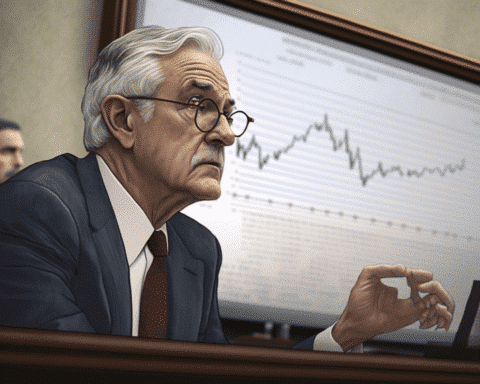Wednesday’s US inflation report brought a wave of concern as key indexes revealed an unexpected acceleration in consumer prices.
The data underscored the persistent challenges faced by the Federal Reserve in taming inflationary pressures. While the report did not trigger significant market turbulence, it reinforced expectations of continued interest rate hikes by the Fed.
Inflation on the Rise and Ongoing Dilemma
The so-called supercore measure of consumer prices for services, excluding housing and energy costs, surged by 0.4% in August, marking its steepest increase in five months. This pushed the 12-month supercore inflation rate to over 4%, a level that remains uncomfortably high for Federal Reserve officials.
Federal Reserve Chair Jerome Powell and his colleagues are anticipated to emphasize their commitment to a prolonged period of interest rate increases at the upcoming September 19-20 meeting. There is even speculation that they might temper their predictions for unwinding rate hikes in 2024.
Potential Recession Signals
However, some economists and market participants warn that the economic landscape could shift rapidly in the coming months, potentially challenging current policy expectations. Key metrics used to gauge economic recessions, such as income adjusted for inflation, payrolls, consumer spending, retail sales, and industrial production, are all under scrutiny.
- Income adjusted for inflation may face headwinds due to slowing wage gains.
- The labor market, while currently strong, could be disrupted by impending strikes in the auto industry.
- Consumer spending and retail sales could be affected by impending student loan repayments.
- Industrial production has already exhibited signs of contraction.
- The historically short time between the last rate hike and the first reduction, averaging around five months, suggests the possibility of rate cuts in the near future, depending on the Fed’s actions in the coming months.
Charting a Course through Economic Uncertainty
The latest US inflation report has raised concerns about the persistence of rising prices, putting the Federal Reserve in a challenging position. While the central bank is expected to reiterate its commitment to raising interest rates, potential recessionary signals and the historical lag between rate hikes and cuts introduce an element of uncertainty into the economic outlook.
As we move forward, policymakers will have to navigate these turbulent waters to ensure stable economic growth while keeping inflation in check.




